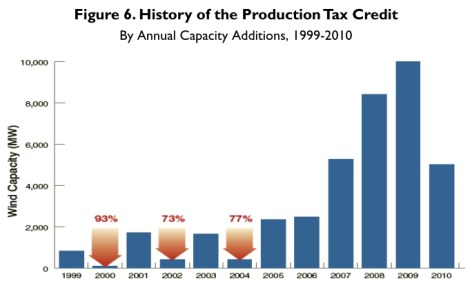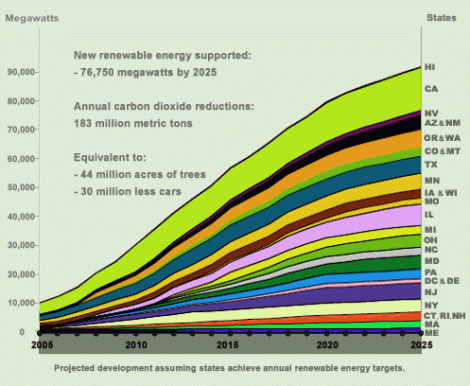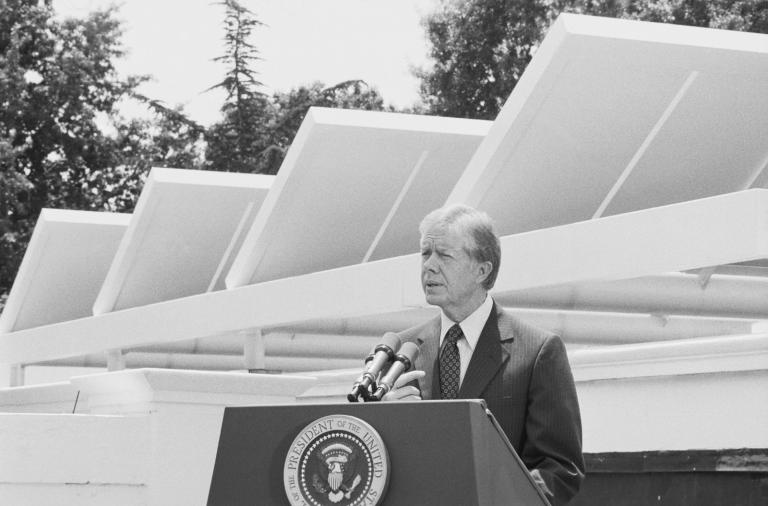
No one likes to be left out. (Photo by charamelody.)
Last week, I highlighted some energy projections from 2000 or so that substantially underestimated the growth of renewables. Mainly I wanted an excuse to repost Michael Noble’s list. So as not to merely thieve, I added a few musings of my own, reflecting my ongoing obsessions with the dynamics of distributed energy and the values-based assumptions buried in economic models. I didn’t think about it all that much, to be honest, nor did I aspire to offer a comprehensive account of why projections fail. (The much-more-qualified Nate Silver has a book on that subject coming out in September.)
Turns out, though, the post was quite popular! It has now been linked to by both David Leonhardt and Paul Krugman of The New York Times. Normally I’d be thrilled, but the post in question has the unfortunate feature of being, um, wrong. Well, maybe not wrong, but it nibbles around the edges and misses the main course.
Why were projections of renewable energy growth from 2000 so woefully off the mark? The main answer, which I passed over in my post, is policy.
The International Energy Agency and U.S. Energy Information Administration do not try to predict policy changes; they project based on the current policy regime. In 2000, there wasn’t much in the way of clean-energy policy. Since then, however, there’s been a great deal, and those policy changes are the biggest driver of renewable energy growth. Michael Levi makes the point well: “without supportive policy that wasn’t in place a decade ago, renewables wouldn’t have done nearly as well. If we want more renewable energy in the coming years than the EIA and IEA currently project, we’re going to need new and more robust policies too.”
Yes. It’s important to remember that policy has driven the expansion of renewable energy. (Not that there’s anything wrong with that.) And as energy smart guy Alan Nogee reminds me, people busted their asses to get those policies passed! They deserve to be heralded.
What policies are we talking about? The federal tax credits for wind and solar are a big chunk. They’ve been fitful and inconsistent — the graph below shows what happened to wind when the PTC lapsed in 2000, 2002, and 2004:
Nonetheless, the tax credits have been better than nothing, federal policy-wise.
Lest Michael Grunwald strike me down, I can’t discuss clean-energy growth without mentioning the extraordinary boost it received from Obama’s stimulus bill, which put $90 billion toward clean energy projects and leveraged another $100 billion in private financing. That’s huge (and also visible on the graph above). Installed wind and solar have doubled during Obama’s tenure.
It looks like the tax credits and the stimulus money are about to drop off a cliff, by the way, as federal energy policy gets polarized like everything else. That could put a real crimp in my optimism.
And here we come to state renewable energy standards — the real, unsung workhorses of the U.S. renewable-energy revolution. As I mentioned the other day, 29 states and D.C. now have mandatory renewable standards in place, which together represent nearly two-thirds of the nation’s generating capacity. Those were not easy victories, either. A lot of them took long, grinding fights.
This is a projection of renewable energy growth done by the Union of Concerned Scientists in 2009, based on state renewable energy standards (assuming they are met):
Now that’s impact! There is also, FYI, a ballot initiative in Michigan this year that would double the state’s renewable energy target, from 10 percent by 2015 to 25 percent by 2025. Meeting the current renewables standard has been cheaper than expected and generated $100 million in investment for the state.
What state renewable energy standards do is what Germany’s feed-in tariffs do: create a broad-based constituency. It’s no coincidence that clean energy is most popular in places where its benefits have been most widely spread, like California and Germany. We’re seeing that dynamic start to impinge on partisan politics in swing states like Iowa (19th on the 2012 State Clean Energy Index) and, yes, Michigan (12th).
U.S. energy policy over the last decade has not been ideal, to say the least, but it’s been enough to get renewables growing way faster than the baseline projections. Just imagine what we could have done if we’d followed Germany’s lead and created a stable, predictable, transparent system of feed-in tariffs for clean-energy technologies in 2000, keyed to decline as costs decline. More than 20 percent of Germany’s energy now comes from renewables. I bet we could do that too!
One more note: The question remains whether outfits like IEA and EIA should be trying to predict policy shifts. It is, after all, highly unlikely that policy will remain static over the course of the next decade. You could argue that they’re not equipped to predict what Congress will do, but modeling no-policy leaves you with projections that are a) useless for prediction purposes or investment decisions, and b) used to nefarious ends by people trying to downplay clean energy’s prospects. Alternatively, they could project for a whole range of different policy scenarios, but then you end up effectively saying, “there will be as much renewable energy as governments decide there will be,” which isn’t that helpful.
If you want to know what’s going to happen in U.S. clean energy, it’s best to survey the opinions of those with a broad view, those who understand economics and finance but also the realities of the political economy. Good discernment and judgment are needed — nay, even wisdom. Spreadsheets can’t provide that.





